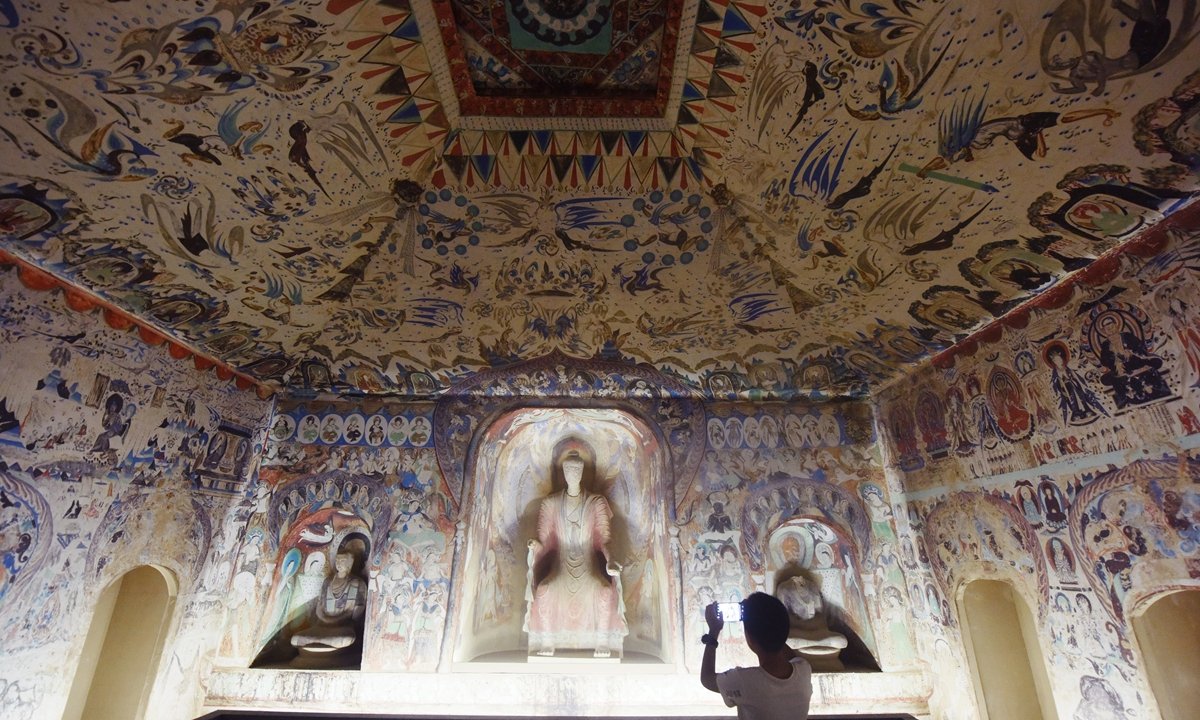Nestled in Northwest China’s Gansu Province, the Mogao Caves in Dunhuang, a UNESCO World Heritage Site, are stepping into the digital era. A platform dedicated to managing its vast digital assets has been launched, offering a comprehensive digital representation of this monumental heritage site.
This new repository brims with rich content: over 100 meticulously digitized fresco paintings, scans from 290 caves and grottoes, and 3D reconstructions of 45 painted statues and seven major relic sites. To add depth to the collection, historical documents, artistic renderings, and vintage photographs have also been integrated into the platform.
Kickstarted in 2021, this ambitious digitization initiative owes its inception to a significant science and technology project championed by Gansu Province. The Dunhuang Academy led the way, collaborating closely with the British Library in the UK. Before setting the wheels of this project in motion, the collaborative team from China and the UK delved deep into researching the myriad of cultural artifacts housed within the caves. This meticulous groundwork paved the way for the creation of a robust data management system, grounded in the Open Archival Information System (OAIS) and complemented by a detailed categorization framework for the digital artifacts.
Deng Bohui, a renowned figure in digital conservation of cultural relics, simplifies the essence of this project. According to him, it’s a “standardized practice that leverages technological advancements to safeguard stationary cultural treasures.” Furthermore, he believes that these digital methodologies are universal tools, invaluable for preserving heritage sites, especially those vulnerable to wear and tear.
Wu Jian, a research fellow at the Dunhuang Academy, lauds the collaborative spirit between China and the UK. This joint venture not only amplifies the preservation efforts for Dunhuang’s treasures but also illuminates a promising path for global collaboration in cultural heritage conservation. Moreover, this venture is setting the stage for a novel “digital return” model, focusing on digitally replicating relics before their physical repatriation. A case in point is the numerous Dunhuang artifacts dispersed across countries, including the US, Russia, India, Japan, and France.
In the words of museum expert Li Liyang, “digital return” denotes crafting digital replicas of artifacts, harnessing their educational and societal significance. This innovative approach is gaining traction, evident in Chinese heritage sites like Henan’s Longmen Grottoes. The Luoyang Museum, in a recent exhibit, showcased digital reimaginings of seven Longmen relics that had been lost abroad, culminating in the virtual “reunion” of a statue whose parts were scattered globally.
Social media reactions echo the excitement and admiration for these digital endeavors. A user on Sina Weibo commented, “Witnessing these digital recreations is like unlocking a historical treasure trove, evoking the profound richness of Chinese culture.”
The digital odyssey of the Dunhuang culture embarked three decades ago. In parallel, by 2005, over 100,000 Buddhist statues from the Longmen Grottoes had been cataloged digitally.
Li Liyang notes a paradigm shift in China’s digital heritage strategy, stating, “Initially, the focus was on leveraging technology to preserve relics and modernize research methodologies. But today, with our technological prowess, the horizon has expanded to exhibitions and global partnerships.”
Echoing similar sentiments, Wu Jian envisions a comprehensive digital legacy for the Mogao Caves, ensuring its perennial preservation and sustainable utility.
READ MORE:
